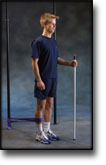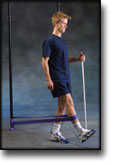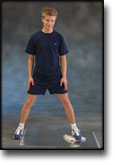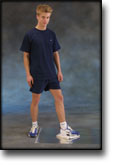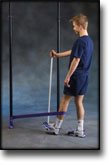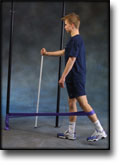|
Lower abdominal pain syndrome in national hockey league players: a report of 11 cases.
Lacroix VJ, Kinnear DG, Mulder DS, Brown RA. Clin J Sport Med 1998 Jan;8(1):5-9.
PURPOSE.
Groin injuries are a major diagnostic and therapeutic challenge in sports medicine. The aim of this review is to describe the clinical and surgical findings associated with an atypical lower abdominal pain syndrome occurring in elite ice hockey players.
CASE SUMMARIES.
Eleven professional ice hockey players from various National Hockey League teams were referred to the Montreal General Hospital between 1989 and 1996, suffering from atypical refractory pain and paraesthesia in the lower abdomen. Despite the use of conventional investigative procedures such as physical examination, ultrasound, bone scan, computed tomography scan, and magnetic resonance imaging scan, preoperative findings were consistently negative. Operative findings revealed varying degrees of tearing of the external oblique aponeurosis and external oblique muscle associated with ilioinguinal nerve entrapment. Repair of the external oblique tear, ablation of the ilioinguinal nerve, followed by a 12-week planned course of physiotherapy allowed all to return to professional ice hockey careers.
DISCUSSION.
While soft tissue injuries are the most common cause of groin pain in the athlete, tears of the external oblique aponeurosis and superficial inguinal ring have rarely been cited as a consistent cause of lower abdominal pain in athletes. Inguinal nerve entrapment is also rare in patients without a history of previous lower abdominal surgery.
RELEVANCE.
These 11 cases emphasize the importance of including another diagnostic possibility in the differential diagnosis of chronic overuse injuries of the lower abdomen.
|






















